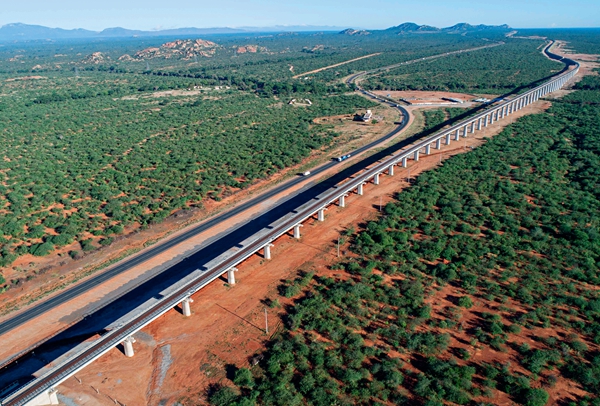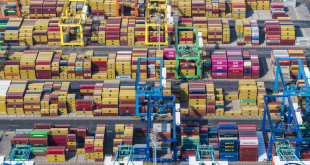
China’s engagement with Africa has evolved into a multifaceted partnership, characterized by the Global Development Initiative (GDI) and the Belt and Road Initiative (BRI). These initiatives aim to foster economic growth, infrastructure development, and sustainable partnerships across the Global South. This article explores how both China and African nations benefit from these collaborations, highlighting key projects and areas of cooperation.
The Global Development Initiative (GDI): A Strategic Framework
Launched by President Xi Jinping in 2021, the GDI seeks to promote equitable development by focusing on poverty alleviation, infrastructure improvement, and sustainable economic growth. It emphasizes:
• Infrastructure Development: Building and upgrading critical infrastructure to stimulate economic activity.
• Trade and Investment: Enhancing trade relations and investment flows between China and African countries.
• Capacity Building: Providing technical assistance and training to strengthen local institutions and human capital.
Through the GDI, China has committed to supporting Africa’s development agenda, aligning with the United Nations’ Sustainable Development Goals (SDGs) and the African Union’s Agenda 2063.
The Belt and Road Initiative (BRI): A Catalyst for Infrastructure and Connectivity
The BRI, introduced in 2013, is a global development strategy that aims to enhance regional connectivity and embrace an ambitious economic agenda. Africa has been a significant partner in this initiative, with numerous projects spanning various sectors.
1. Transport and Connectivity
• Mombasa-Nairobi Standard Gauge Railway (SGR), Kenya: This $3.6 billion project, completed in 2017, connects Kenya’s port city of Mombasa to the capital, Nairobi. It has significantly reduced travel time and boosted trade efficiency.
• Addis Ababa-Djibouti Railway, Ethiopia and Djibouti: A 756 km electrified railway linking Addis Ababa to the Port of Djibouti, facilitating landlocked Ethiopia’s access to global markets.
• Maputo-Katembe Bridge, Mozambique: Africa’s longest suspension bridge, completed in 2018, enhancing connectivity between Maputo and its southern suburbs, thereby improving trade routes with South Africa.
2. Energy and Power Generation
• Kafue Gorge Lower Hydroelectric Project, Zambia: A $2 billion project that adds 750 MW to Zambia’s power grid, addressing energy shortages and supporting industrial growth.
• Benban Solar Park, Egypt: Africa’s largest solar power plant, with a capacity of 1.8 GW, contributing to Egypt’s renewable energy goals and providing sustainable power to the national grid.
3. Ports and Maritime Infrastructure
• Port of Doraleh, Djibouti: Modernized under the BRI, this port has become a critical logistics hub in East Africa, enhancing trade flows and regional integration.
• Lamu Port, Kenya: Part of the Lamu Port-South Sudan-Ethiopia Transport (LAPSSET) Corridor, this deep-water port aims to boost regional trade and economic integration.
4. Digital Connectivity and Telecommunications
• Transcontinental Fiber Optic Network (BRICS Cable): A project aimed at improving Africa’s digital connectivity by establishing a submarine fiber optic cable linking Africa, Asia, and Europe, enhancing internet access and communication infrastructure.
Socio-Economic Impacts and Benefits
For Africa:
• Infrastructure Development: The BRI has led to the construction of roads, railways, ports, and energy facilities, addressing critical infrastructure gaps and stimulating economic growth.
• Job Creation: Thousands of jobs have been created during the construction phases of various projects, contributing to local employment and skill development.
• Enhanced Trade: Improved infrastructure has facilitated smoother trade flows, reducing transportation costs and increasing competitiveness in global markets.
• Capacity Building: Technical assistance and training programs have strengthened local institutions and human capital, fostering sustainable development.
For China:
• Economic Partnerships: The BRI has opened new markets for Chinese goods and services, fostering economic ties with African nations.
• Strategic Influence: Through infrastructure investments, China has enhanced its geopolitical influence in Africa, promoting stability and cooperation.
• Resource Access: Investments in energy and natural resources sectors have secured access to critical resources, supporting China’s economic growth.
Challenges and Considerations
While the GDI and BRI have brought significant benefits, challenges remain:
• Debt Sustainability: Some African countries face challenges in managing debts incurred from large-scale infrastructure projects, necessitating careful financial planning and management.
• Environmental Concerns: Infrastructure projects must consider environmental impacts to ensure sustainable development practices.
• Transparency and Governance: Strengthening governance frameworks and ensuring transparency in project implementation are crucial for long-term success.
Conclusion
China’s engagement with Africa through the Global Development Initiative and the Belt and Road Initiative has fostered a robust partnership characterized by mutual benefits. By focusing on infrastructure development, trade enhancement, and capacity building, both regions have made significant strides toward sustainable development. Continued collaboration, mindful of challenges and opportunities, will be essential in realizing the full potential of this strategic partnership.
 Africa -China Review Africa -China Cooperation and Transformation
Africa -China Review Africa -China Cooperation and Transformation
